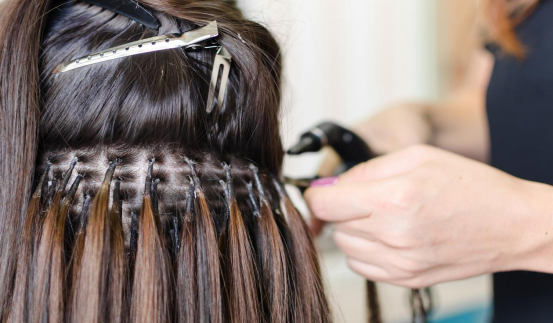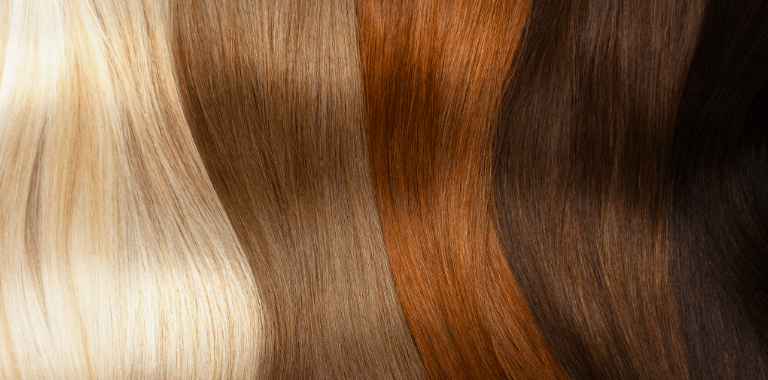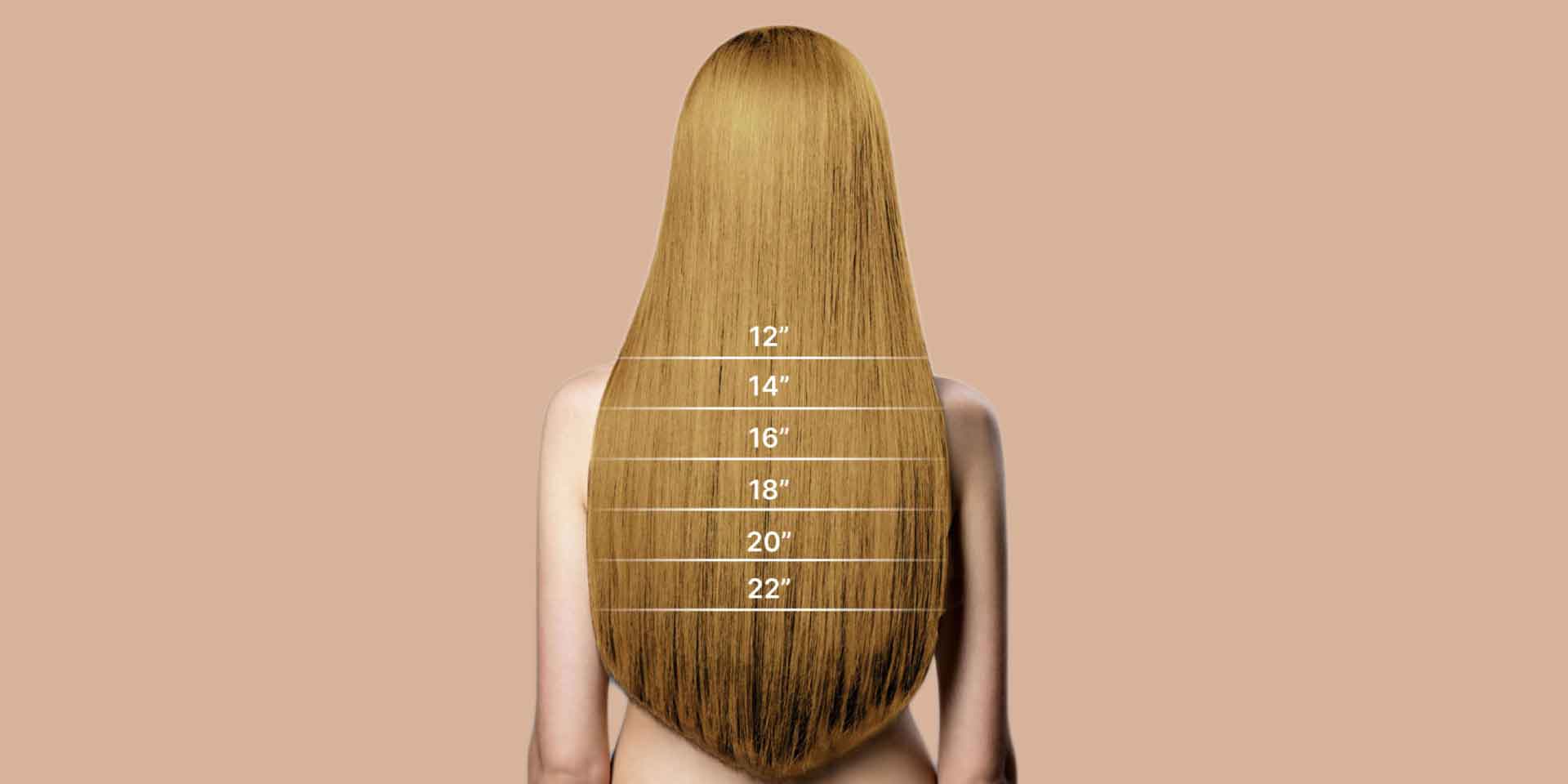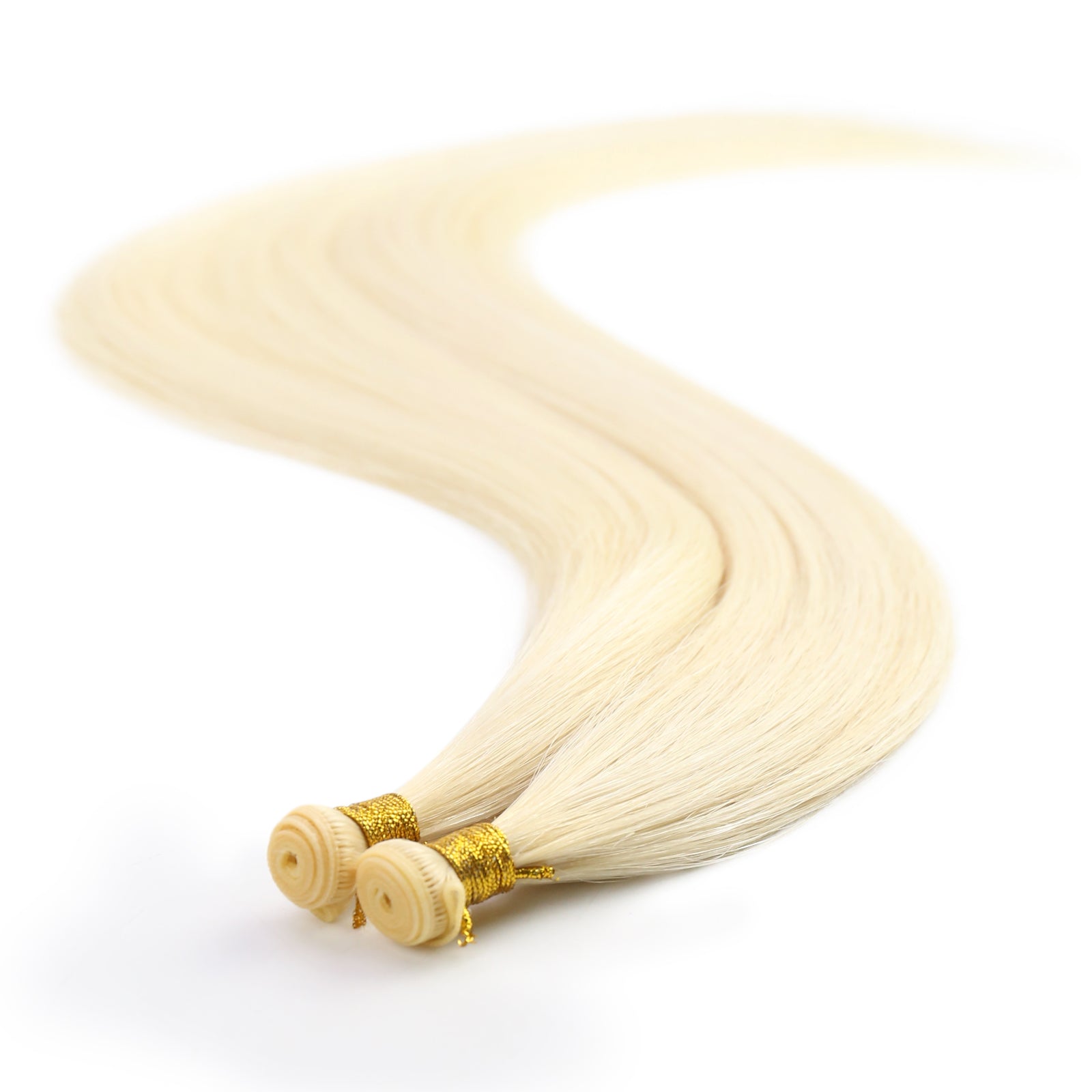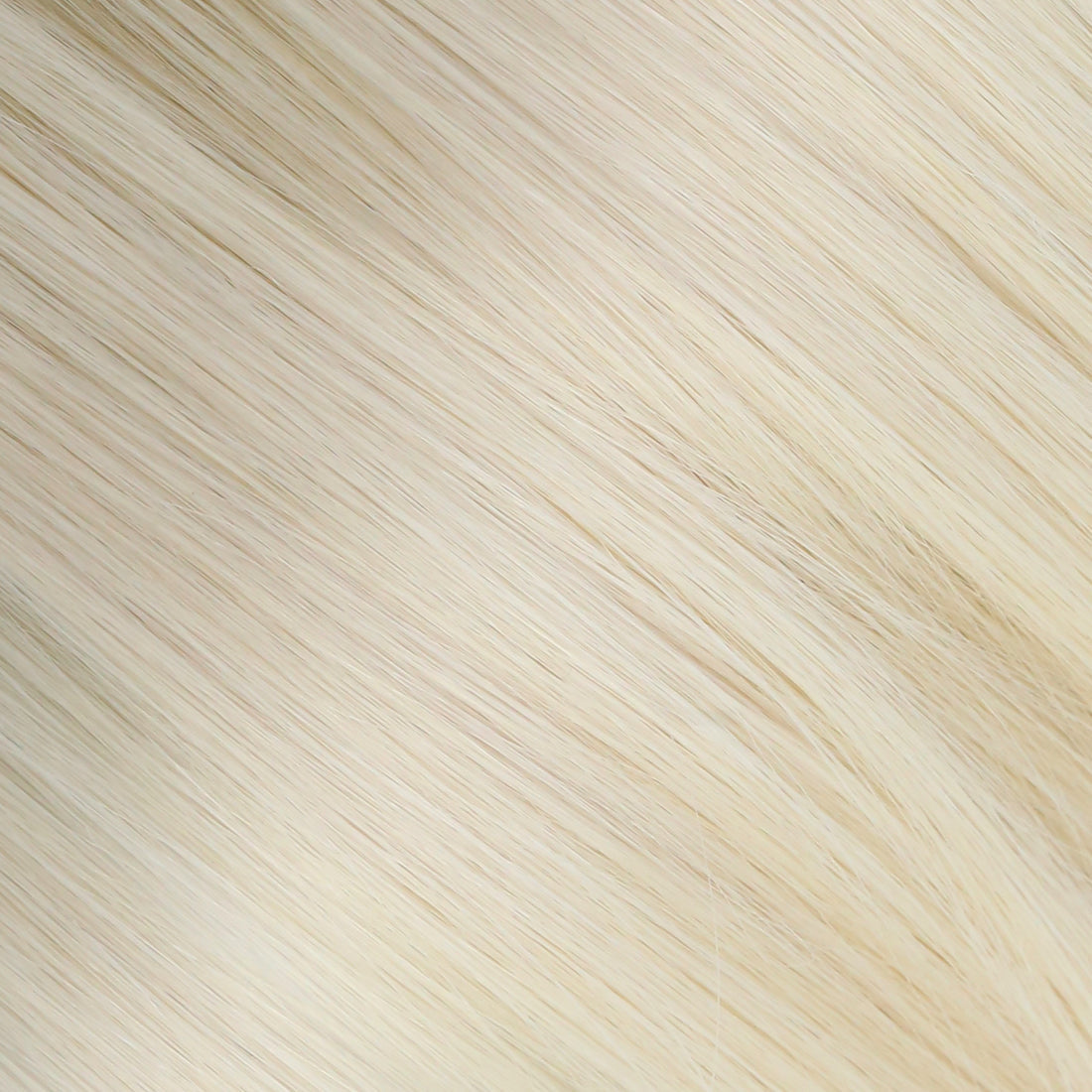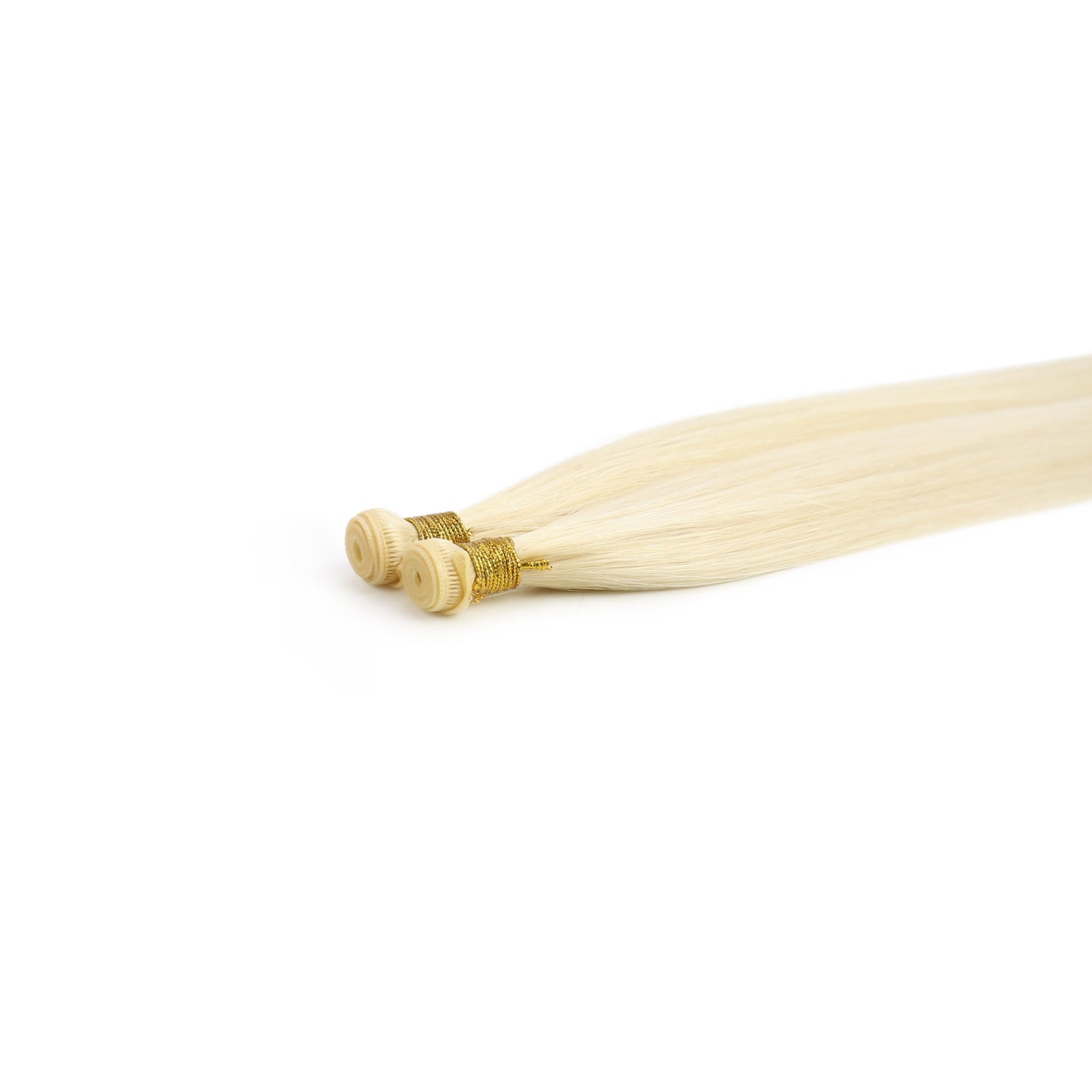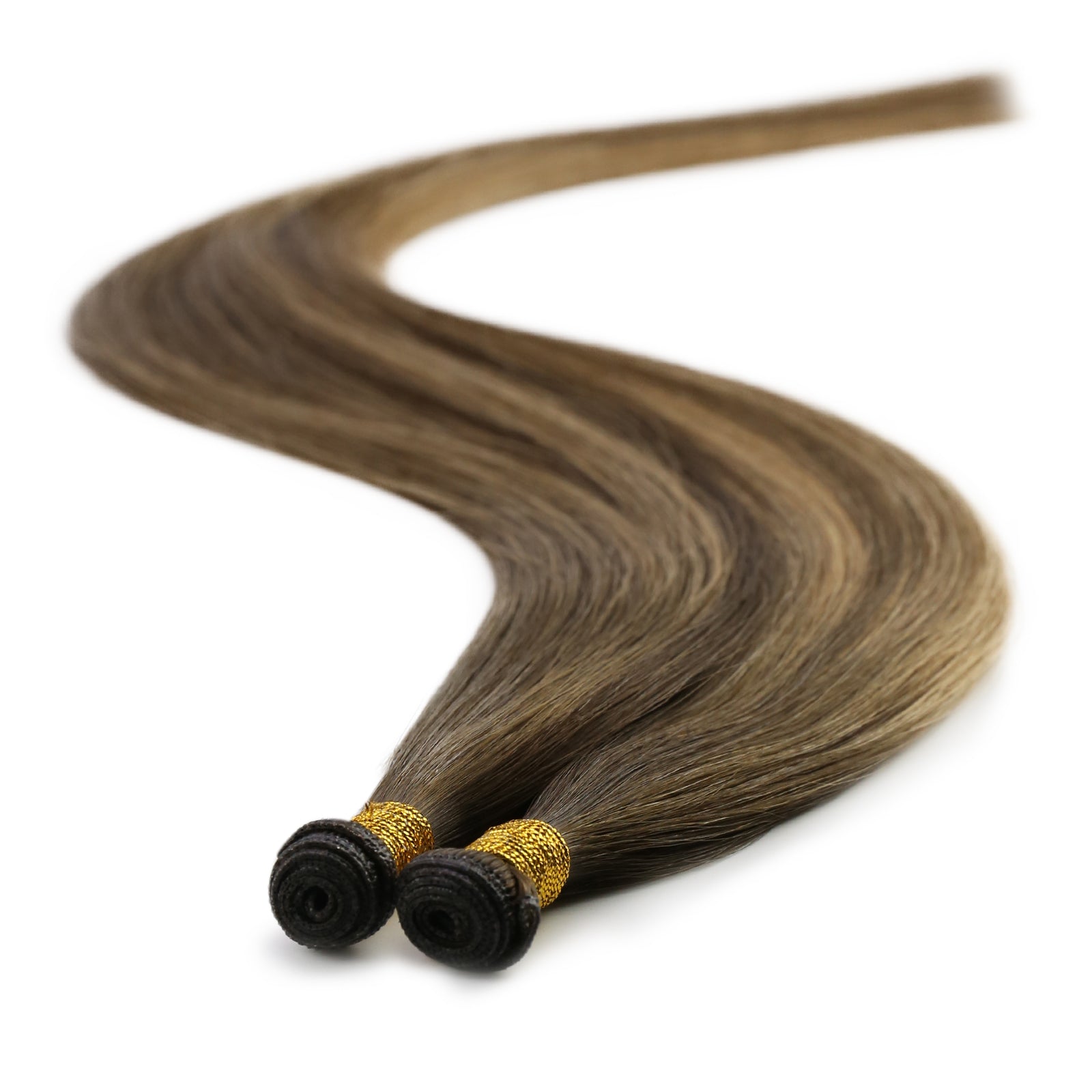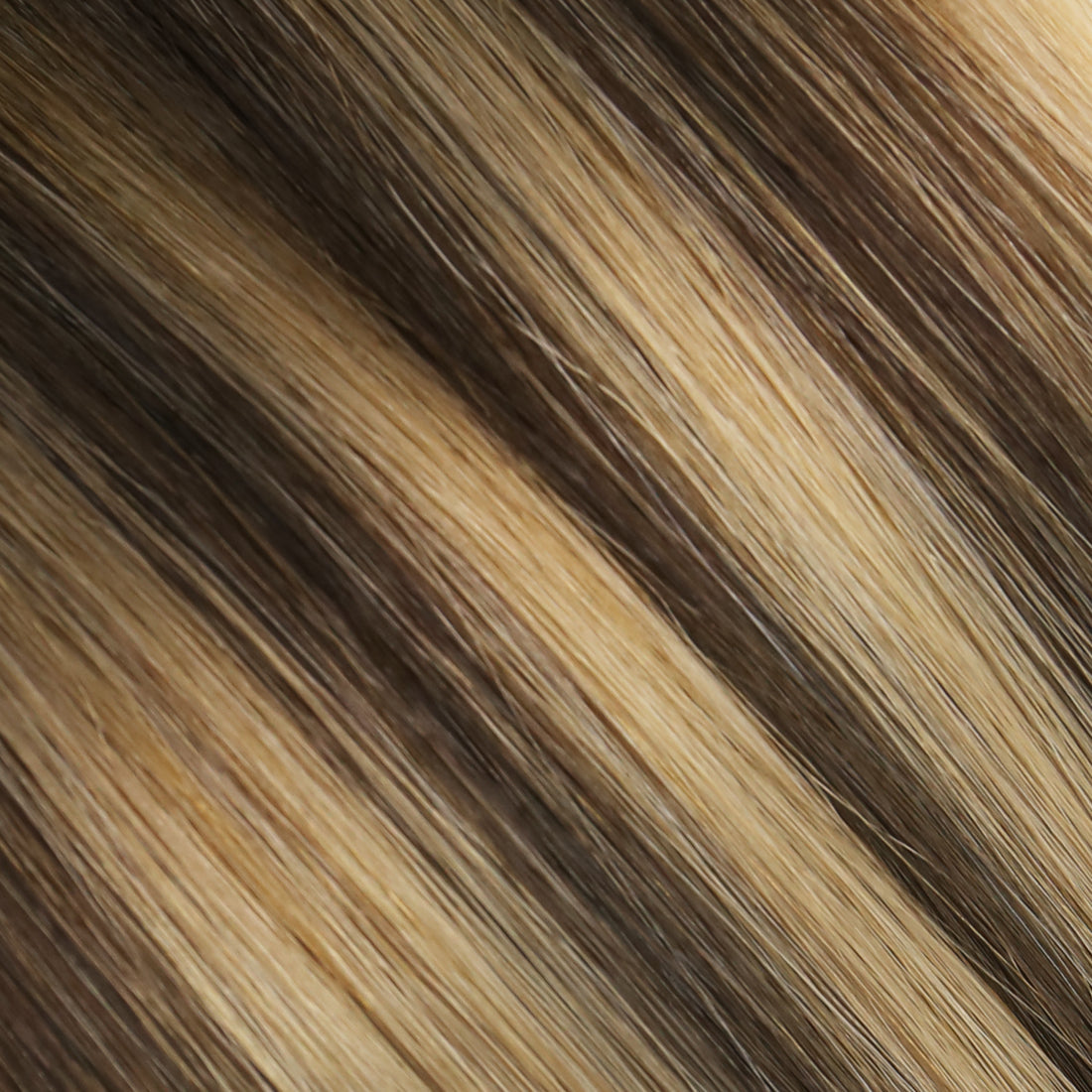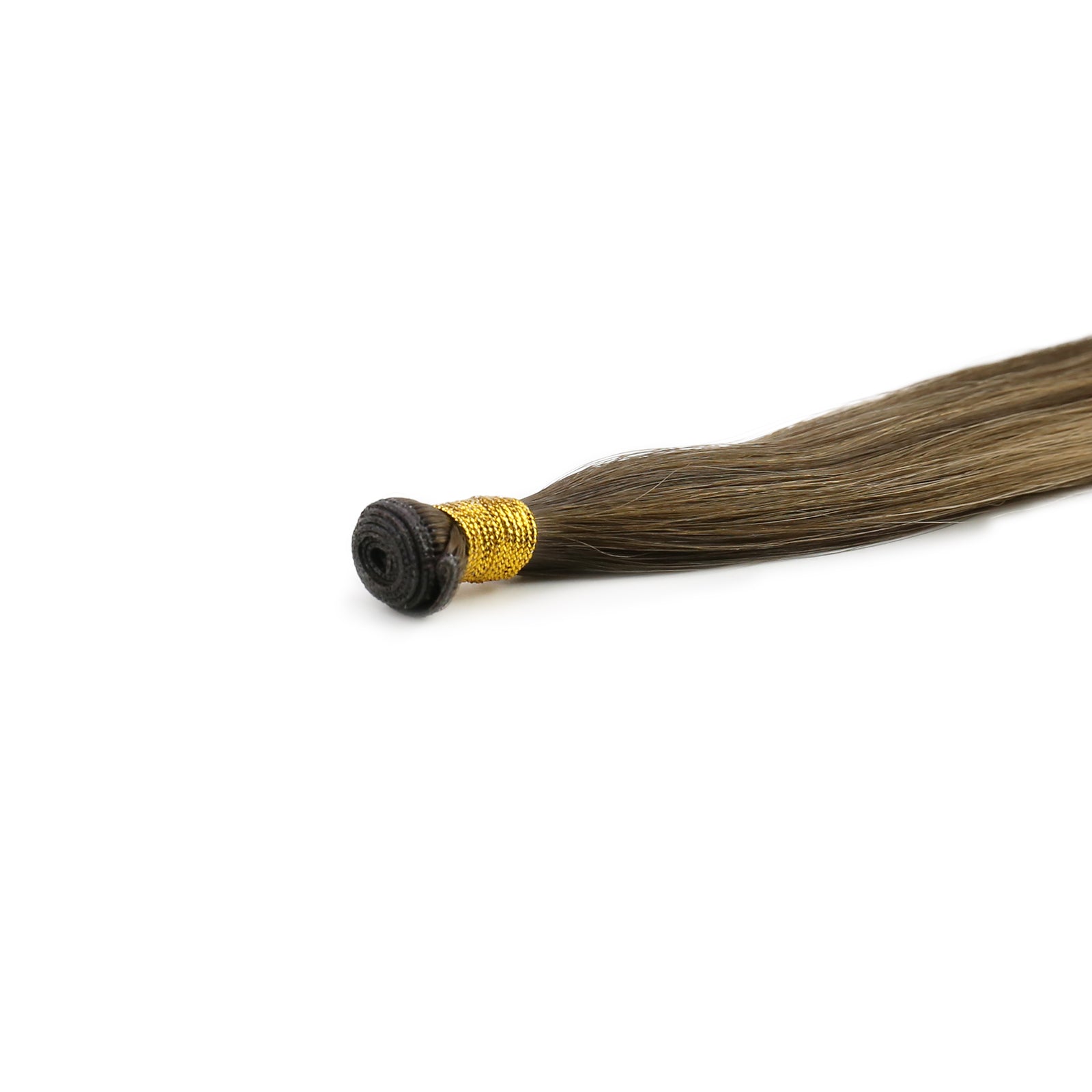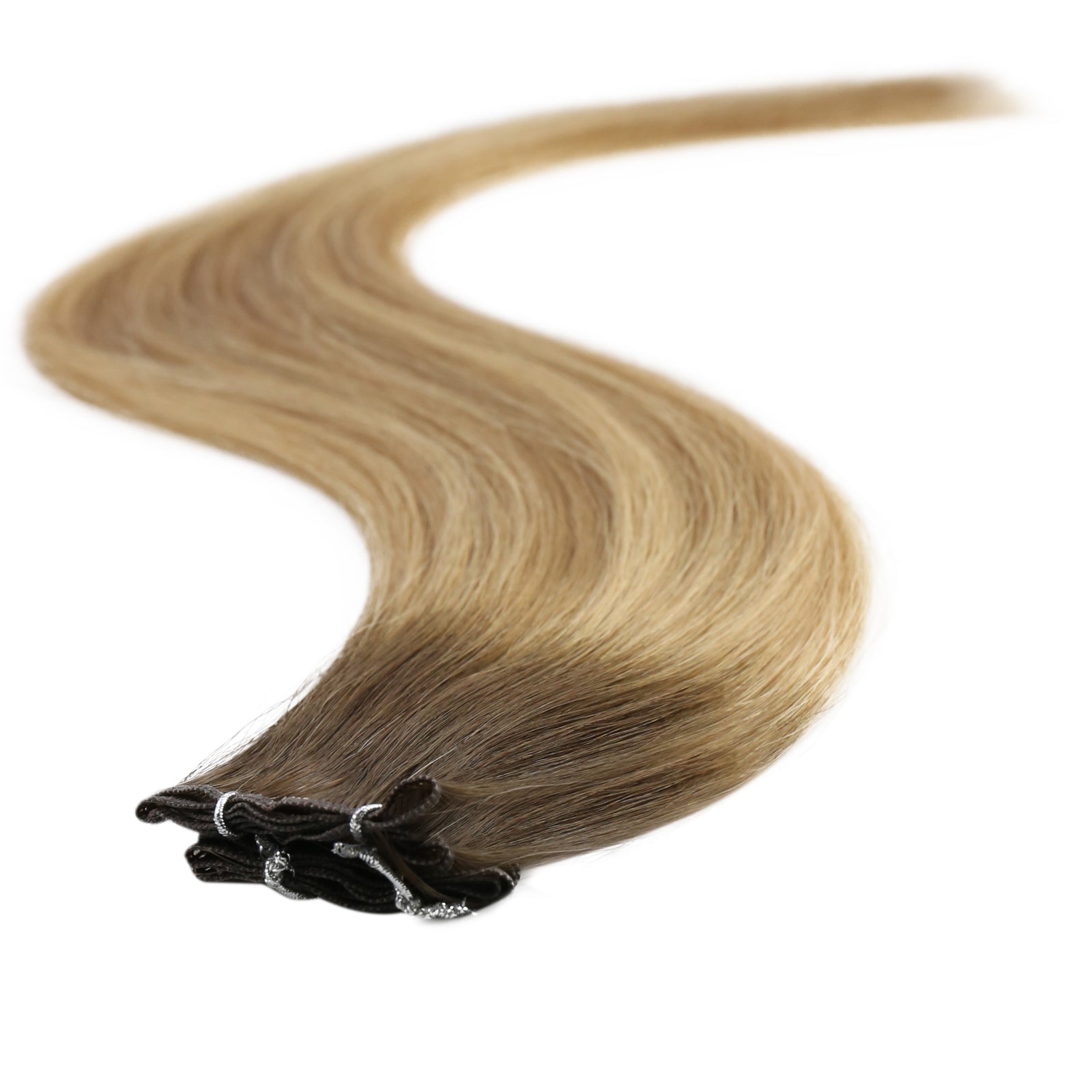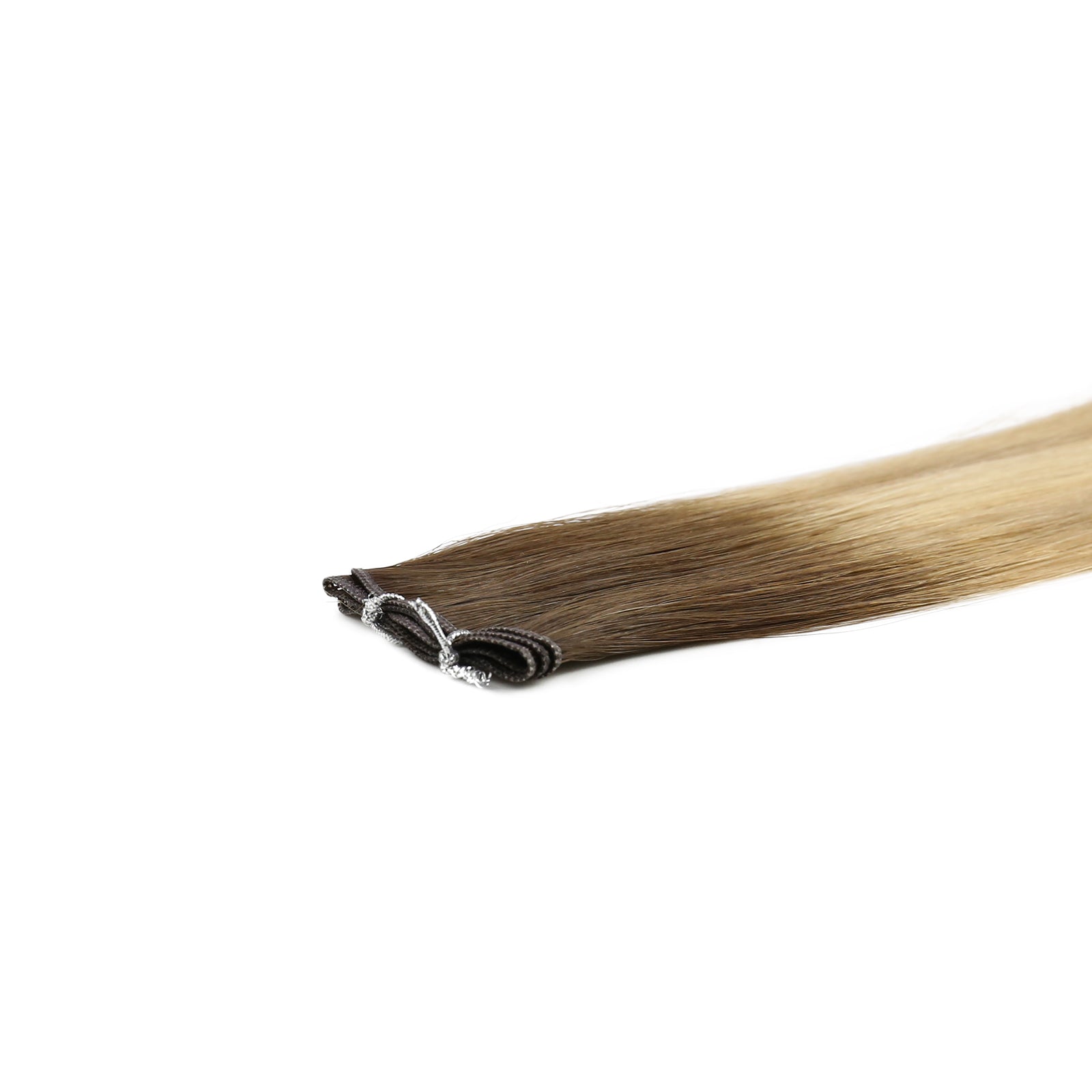Feeling uneasy about thin hair and the possibility of your scalp showing? The real challenge, however, is finding hair extensions that blend in perfectly.
Using hair extensions is a fantastic way to elevate your style, provided they merge flawlessly with your natural hair without standing out.The trick lies in selecting extensions that are indistinguishable from your own hair.
This blog is dedicated to helping you discover the ideal invisible hair extensions for thin hair, so you can step out on your date brimming with confidence and radiance. Let's dive in!

What types of extensions are the most advisable for thin hair?
Enhancing thin hair with the right extensions is key to achieving a natural look while avoiding damage. While there are various options such as tape-in, clip-in, hand-tied weft, I-tip, and K-tip extensions, not all are suitable for thin hair.
It's crucial to choose the type that adds both volume and length, all while maintaining your hair's health.
Next, let's delve into the best invisible hair extensions specifically designed for thin hair. We'll explore why certain types are exceptionally effective for this hair texture, ensuring that you achieve the perfect blend of style and comfort.
1. Tape-ins
Tape-in hair extensions are widely recommended for thin hair due to their lightweight nature and even distribution of weight. The tape is flat, so it sits closely against the head, making them less detectable and more comfortable to wear. Let’s learn more about why they are an ideal choice for finer hair.

- Lightweight Design: One of the main reasons tape-ins are great for thin hair is their lightweight nature. Unlike heavier extensions, such as clip-ins, they won't tug or pull on your hair, which is crucial for preventing breakage and maintaining the health of your fine strands.
- Flat and Comfortable:The tape wefts are designed to be flat and slim, which means they sit close to the scalp and blend more seamlessly with your natural hair. This not only makes them more comfortable to wear but also less detectable, ensuring a natural-looking result.
- Even Distribution of Weight: Tape-in extensions are applied in strips across a wider section of hair, distributing the weight more evenly. This is essential for thin hair, as it reduces stress and strain on individual strands, which can be a problem with other types of extensions that concentrate weight in smaller areas.
- Gentle on Hair: The method of applying tape-in extensions is generally gentler compared to methods that involve heat or weaving. The adhesive used on tape-ins is designed to be strong enough to hold the extension in place but not so harsh that it damages your hair.
- Easy Maintenance and Removal: Caring for tape-in extensions is relatively straightforward. They can be washed and brushed like your regular hair. Furthermore, when it’s time to remove them, the process can be done with a special bond remover, ensuring a gentle removal process that doesn’t harm your natural hair.
- Reusability:A significant advantage is that tape-in hair extensions can be reused. Once removed, they can be cleaned and have new tape applied, making them a cost-effective and environmentally friendly option.
Overall, tape-in extensions strike a balance between offering the additional volume and length of many desires, while being kind enough for thin hair, making them an excellent choice for those with finer hair types.
Tip: Tape-in extensions are often favored as ideal invisible hair extensions for thin hair, but it's essential to be aware of some downsides. Their application requires sandwiching your natural hair between adhesive tapes, which could result in hair loss during removal if not doing it right. So, handle with care! To ensure the safety of your natural hair, it's best to enlist the help of a professional stylist for both removal and reapplication. They can make sure the process is gentle and effective, safeguarding your natural locks from any potential damage.
2. Hand-tied Weft
The second option is Hand-tied weft. This kind of extension is also an excellent choice for those with thin hair, thanks to their delicate and lightweight construction.
These wefts are manually tied to a thin, strong thread, resulting in a much thinner and lighter weft compared to machine-tied alternatives. This feature allows them to lay flat against the scalp, just like what tape-ins do, blending seamlessly with your natural hair for an undetectable finish. Let's delve into why hand-tied wefts are particularly well-suited for fine hair types in detail.

- Light and Comfortable: Hand-tied wefts are super light. They are made by manually tying hair onto a thin, strong thread. This makes them much lighter than machine-tied wefts, which is a huge plus for thin hair. You don’t want anything too heavy that could pull on your strands and potentially cause damage.
- Natural-Looking: Since they are so thin and lightweight, they lay flat against your scalp. This means they blend in really well with your natural hair. Without using any beads, which are the essence of some extensions like i-tips, it's hard to notice that you’ve applied hand-tied weft on your hair, which is exactly what you want when you're going for a natural look.
- Less Strain on Your Hair: Their lightness also means they put less strain on your natural hair. With thin hair, you've got to be careful about tension and stress on your strands. Hand-tied wefts distribute the weight more evenly and don't tug or pull as much, which is a big relief for your delicate hair.
- Customizable: One of the best things about hand-tied wefts is that they can be customized to your hair density and color. This customization ensures they match perfectly with your hair, making them virtually invisible.
- Flexibility in Styling: Despite being attached to your hair, hand-tied wefts offer a decent amount of styling flexibility. You can wear your hair up or down without worrying about the wefts being visible. They move more naturally with your hair, so you can style as you like.
In summary, hand-tied wefts are definitely a solid choice of invisible hair extensions for thin hair. They offer a balance between adding volume and length while keeping things looking natural and feeling comfortable. Just remember to consult with a hairstylist experienced in hand-tied wefts to get the best results!
Tip: It's important to get hand-tied weft installed by a professional. The application process is delicate and requires skill to ensure no damage is done to your natural hair. Beside, like any hair extension, they require maintenance. You need to be gentle while brushing and washing your hair. Also, regular visits to the salon for upkeep are necessary to ensure they remain in good shape and keep looking natural.
What types of extensions are not suitable for thin hair?
As we’ve already talked about ideal invisible hair extensions for thin hair, let’s discuss the types that are not good choices for finer hair. Please note that these hair extension types are generally excellent for adding volume and length, but they are mentioned here specifically because they may not be the optimal choice for individuals with thinner hair.

1. Glue-In Extensions
Glue-in extensions come with a problem: they use an adhesive for attachment, which can be tough on thin hair. During removal, there's a risk of the glue tugging at your hair, leading to possible breakage or hair loss. Moreover, if you have thin hair, glue-ins might not blend in as subtly as you'd like. They generally need more hair for a secure hold, so there's a chance they could become noticeable, which isn't ideal if you're aiming for a natural look.
2. Fusion/Bonded Extensions
These are applied by bonding the extension to your natural hair using a special kind of adhesive, often with the help of heat. The issue here for thin hair is twofold. Firstly, the heat and the adhesive can be damaging (if not doing it right), weakening your hair and potentially leading to breakage. Secondly, because these extensions are bonded to individual strands of hair, if your hair is too thin, they might not blend in as seamlessly. They can sometimes end up being noticeable, which isn't really the look you're going for.
3. Heavy Clip-In Extensions
Now, clip-ins can be great, but if they're too heavy, they're not the best match for thin hair. The weight of heavy clip-ins can put a lot of strain on your natural hair, leading to damage or even causing your hair to break. Plus, if your hair is fine, heavy extensions might not stay in place very well and can tug on your hair throughout the day. This not only is uncomfortable but also can make them more visible – you might have clips peeking through, which isn't exactly subtle.
In short, for these types of extensions, the common theme is that they can be too heavy, too visible, or too harsh on thin hair. You want something that's going to look natural and feel comfortable, and these types might not tick those boxes for you.
Summing Up
So, we've navigated the world of invisible hair extensions for thin hair together, and I hope it's been enlightening. These extensions are your secret weapon for a flawless, confident look. Just remember, the perfect, invisible hair extensions are out there to enhance your natural beauty effortlessly. You're going to look stunning!
